10 Unbelievable Wonders To Explore In India
By: Priyanka Maheshwari Mon, 12 June 2023 1:52:32
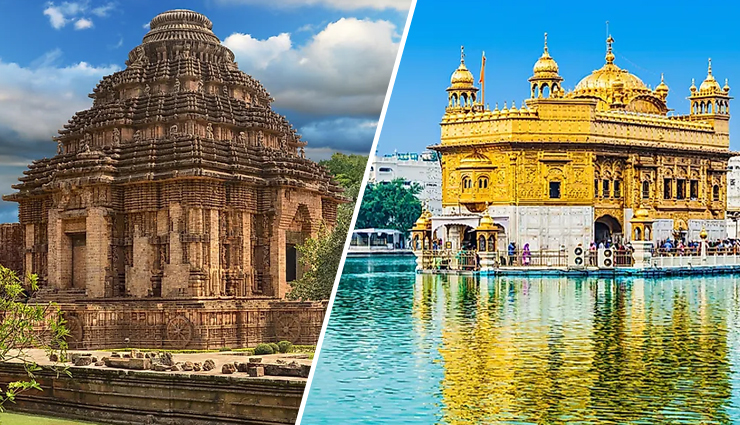
India, a land of rich culture, diverse traditions, and breathtaking landscapes, is home to some of the world's most incredible wonders. From ancient architectural marvels to natural wonders that will leave you in awe, India offers a treasure trove of experiences for travelers. In this article, we will take you on a virtual journey to explore 10 unbelievable wonders in India that are sure to leave a lasting impression on your heart and soul.
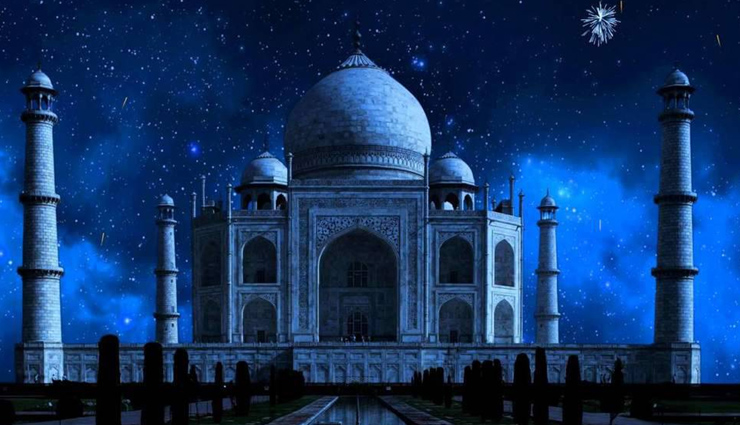
# The Taj Mahal, Agra
Taj Mahal is one of the most iconic and recognizable structures in the world. It is a symbol of love and an architectural masterpiece. The Taj Mahal was commissioned by Mughal Emperor Shah Jahan in the 17th century as a mausoleum for his beloved wife, Mumtaz Mahal, who passed away during childbirth. It is said to be a testament to their eternal love. Construction of the Taj Mahal began in 1632 and took approximately 20 years to complete. It is considered a jewel of Mughal architecture and a UNESCO World Heritage Site since 1983.
Architectural Marvel:
The Taj Mahal is renowned for its exquisite beauty and architectural brilliance. It is built entirely of white marble, which gives it a stunning appearance and a radiant glow. The structure combines elements of Persian, Islamic, and Indian architectural styles. The central dome, minarets, and intricate decorative motifs are some of its notable features. The symmetry of the Taj Mahal is remarkable, with perfectly aligned gardens, reflecting pools, and structures.
Gardens and Layout:
Surrounding the Taj Mahal is a spacious charbagh, a traditional Persian-style garden divided into four quadrants by water channels. The garden layout represents the idea of paradise, with fountains, pathways, and carefully manicured lawns. The reflection of the Taj Mahal in the central pool adds to the ethereal beauty of the site.
Interior:
While the exterior of the Taj Mahal is breathtaking, the interior is equally captivating. Inside the main mausoleum, you'll find the cenotaphs of Mumtaz Mahal and Shah Jahan, adorned with intricate marble inlay work and precious gemstones. However, the actual tombs are located in a chamber below the main level and are not accessible to the public.
Symbol of Love and Heritage:
The Taj Mahal is a symbol of eternal love and devotion. It is often referred to as the "Jewel of Muslim Art in India" and is considered one of the Seven Wonders of the World. Millions of visitors from around the globe come to witness its grandeur and appreciate its architectural and cultural significance.
Conservation and Restoration:
Over the years, the Taj Mahal has faced challenges due to pollution, environmental factors, and increased tourist footfall. To preserve its beauty and integrity, conservation efforts are ongoing. Measures such as limited visitor access, pollution control, and restoration work have been implemented to protect this cultural treasure for future generations.
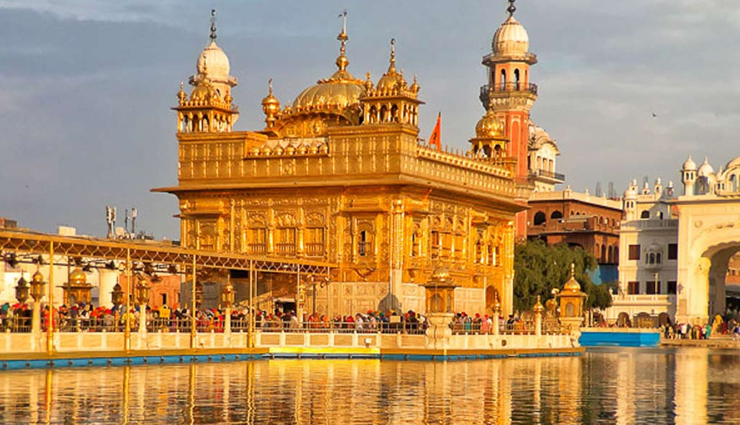
# The Golden Temple, Amritsar
Golden Temple, also known as Harmandir Sahib, is a revered Sikh gurdwara (place of worship) located in Amritsar. It holds great religious and historical significance for Sikhs and is one of the most important pilgrimage sites in the world. The Golden Temple was founded by the fourth Sikh Guru, Guru Ram Das, in the 16th century. The construction of the temple began in 1588 and was completed in 1604 by Guru Arjan Dev, the fifth Sikh Guru. The temple is a symbol of equality, spirituality, and the Sikh principles of service, compassion, and community.
# Architectural Marvel:
The Golden Temple is renowned for its striking architecture and gilded exterior. The temple is situated in the center of a man-made lake called the Amrit Sarovar (Pool of Nectar), which is considered holy by Sikhs. The main building is a two-story marble structure adorned with intricate gold and precious stone work. The dome of the temple is covered in gold leaf, giving it its distinctive appearance. The temple's architecture is a blend of Hindu and Islamic styles, reflecting the inclusive nature of Sikhism.
# Spiritual and Cultural Hub:
The Golden Temple serves as the central religious and cultural hub for Sikhs. It is open to people of all faiths and backgrounds, emphasizing the principles of inclusivity and equality. The temple complex houses the Akal Takht, the highest temporal seat of Sikh authority, and the Guru Granth Sahib, the holy scripture of Sikhism. The Guru Granth Sahib is continuously read and recited within the temple premises.
# Community Kitchen (Langar):
One of the remarkable aspects of the Golden Temple is its langar, a community kitchen that serves free meals to all visitors regardless of caste, creed, or social status. The langar is considered a symbol of equality and selfless service. It is one of the largest free kitchens in the world, serving meals to thousands of people every day.
# Daily Rituals and Ceremonies:
The Golden Temple witnesses various daily rituals and ceremonies that are part of Sikh tradition. The day begins with the Prakash (morning ceremony) when the Guru Granth Sahib is ceremoniously opened and carried from the Akal Takht to the sanctum. The evening ceremony, known as Sukhāsan, marks the closing of the Guru Granth Sahib for the night. Additionally, the temple's surroundings echo with the soul-stirring recitation of hymns and devotional music.
# Festival Celebrations:
The Golden Temple is particularly vibrant during major Sikh festivals such as Gurpurab (birth anniversary of Sikh Gurus) and Vaisakhi (celebration of the formation of the Khalsa). These occasions witness an influx of pilgrims from around the world, creating an atmosphere of spiritual fervor and joyous celebrations.
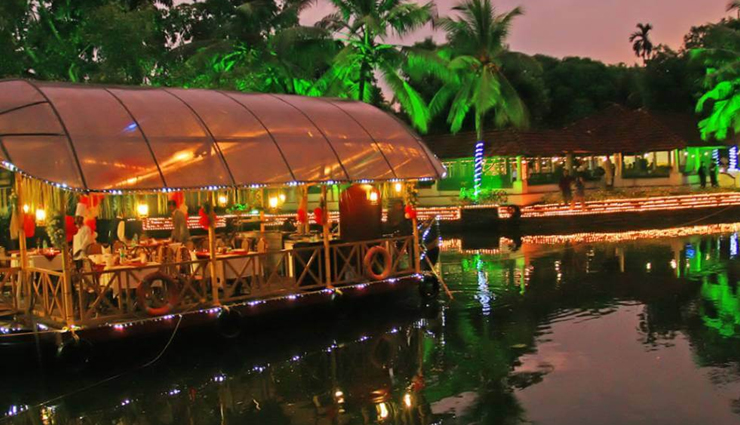
# The Backwaters of Kerala
The Backwaters of Kerala are a unique and enchanting network of interconnected canals, lakes, rivers, and lagoons that stretch along the coastal regions of the Indian state of Kerala. This serene and picturesque landscape offers a peaceful and idyllic retreat for travelers. The Backwaters of Kerala span over 900 kilometers (560 miles) along the Arabian Sea coast. The network includes several major lakes, including Vembanad Lake, Ashtamudi Lake, and Kayamkulam Lake, as well as numerous smaller lakes and waterways. The backwaters are formed by the merging of rivers flowing from the Western Ghats mountain range and the Arabian Sea.
Scenic Beauty:
The Backwaters of Kerala are renowned for their breathtaking natural beauty. The tranquil waterways are lined with coconut palm trees, lush green paddy fields, and charming villages. The serene ambiance and picturesque vistas create a soothing and refreshing atmosphere.
Houseboat Cruises:
One of the most popular ways to experience the Backwaters is by embarking on a traditional houseboat cruise, locally known as "kettuvallam." These houseboats are traditional wooden boats converted into comfortable floating accommodations with bedrooms, living areas, and even kitchens. Cruising through the backwaters on a houseboat allows you to soak in the peaceful surroundings, witness the local life along the banks, and enjoy the panoramic views.
Rural Life and Villages:
The Backwaters offer a glimpse into the traditional rural life of Kerala. As you cruise along the waterways, you can observe villagers engaged in their daily activities, such as fishing, farming, and coir-making (coconut fiber extraction). Interacting with the friendly locals and exploring the villages allows you to gain insights into the local culture and way of life.
Wildlife and Bird Watching:
The Backwaters are home to a rich variety of flora and fauna. You may encounter several species of birds, including kingfishers, herons, egrets, and migratory birds that visit during certain seasons. The waterways also support diverse marine life, including fish, turtles, and otters. Some backwater areas are designated as bird sanctuaries, such as the Kumarakom Bird Sanctuary, which is a paradise for bird watchers.
Ayurvedic Wellness:
Kerala is renowned for its traditional Ayurvedic practices, and the Backwaters provide an ideal setting for rejuvenation and wellness. Many resorts and wellness centers along the backwaters offer Ayurvedic treatments, therapies, and massages. These ancient healing practices can help relax your mind, body, and soul, providing a holistic wellness experience.
Cultural Experiences:
The Backwaters of Kerala also offer opportunities to engage with the local culture and traditions. You can witness traditional art forms like Kathakali (classical dance-drama), Theyyam (ritualistic dance), and Mohiniyattam (classical dance form). Exploring the local markets, tasting the delicious Kerala cuisine, and visiting historical landmarks in nearby towns like Alleppey and Kochi add to the cultural immersion.
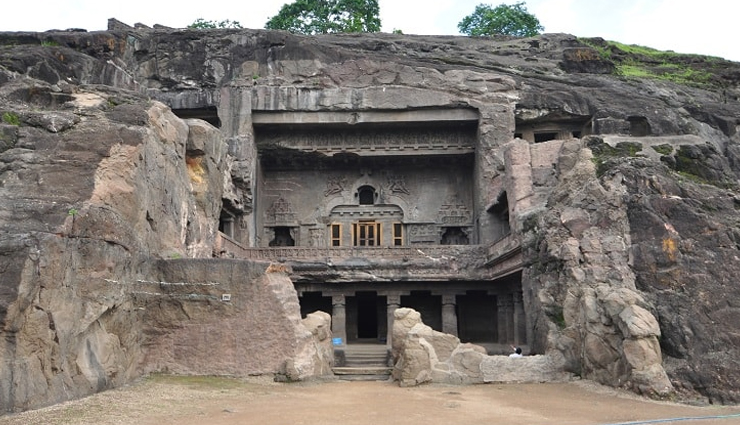
# The Ajanta and Ellora Caves, Maharashtra
Step back in time and explore the Ajanta and Ellora Caves, a UNESCO World Heritage Site in Maharashtra. These ancient rock-cut cave complexes showcase remarkable Buddhist, Jain, and Hindu art and architecture. The Ajanta Caves, dating back to the 2nd century BCE and 6th century CE, consist of 30 rock-cut Buddhist cave monuments. These caves are renowned for their exquisite frescoes, intricate sculptures, and detailed rock-cut architecture. The paintings depict stories from the life of Buddha, Jataka tales, and various mythological narratives. The Ajanta Caves offer a glimpse into the rich cultural and artistic heritage of ancient India.
Ellora Caves
The Ellora Caves, spanning a period from the 6th to the 10th century CE, are a complex of 34 rock-cut temples representing Buddhism, Hinduism, and Jainism. These caves demonstrate the religious harmony that prevailed in ancient India. The Kailash Temple, dedicated to Lord Shiva, is the most remarkable structure in Ellora. It is the largest monolithic rock-cut temple in the world and showcases extraordinary architectural craftsmanship.
Architecture and Sculptures
Both the Ajanta and Ellora Caves display impressive rock-cut architecture. The caves were meticulously carved out of the basalt cliffs, with intricate details and impressive precision. The sculptures within the caves depict deities, celestial beings, and scenes from religious texts. The artistry, skill, and attention to detail exhibited in the carvings are awe-inspiring and showcase the mastery of ancient Indian artisans.
Buddhist Influence
The Ajanta Caves are predominantly Buddhist, reflecting the prominence of Buddhism in ancient India. The caves served as monastic retreats and centers for Buddhist learning. The sculptures and paintings in these caves depict various forms of Buddha, bodhisattvas, and Buddhist teachings. The Ajanta Caves played a crucial role in the spread and preservation of Buddhist art and philosophy.
Hindu and Jain Influence
The Ellora Caves have a diverse religious representation, with caves dedicated to Hindu and Jain deities. The Hindu caves feature intricately carved sculptures of gods and goddesses, such as Lord Shiva, Lord Vishnu, and Goddess Durga. The Jain caves exhibit impressive depictions of Jain Tirthankaras and Jain philosophy. The coexistence of these different faiths within the same complex showcases the religious harmony prevalent in ancient India.
Preservation and Tourism
Efforts have been made to preserve and protect the Ajanta and Ellora Caves, ensuring their cultural and historical significance endures. The caves attract a large number of tourists and scholars from around the world who come to admire the architectural grandeur and artistic heritage. Exploring the caves, witnessing the ancient artworks, and immersing oneself in the rich history make for a captivating and enlightening experience.
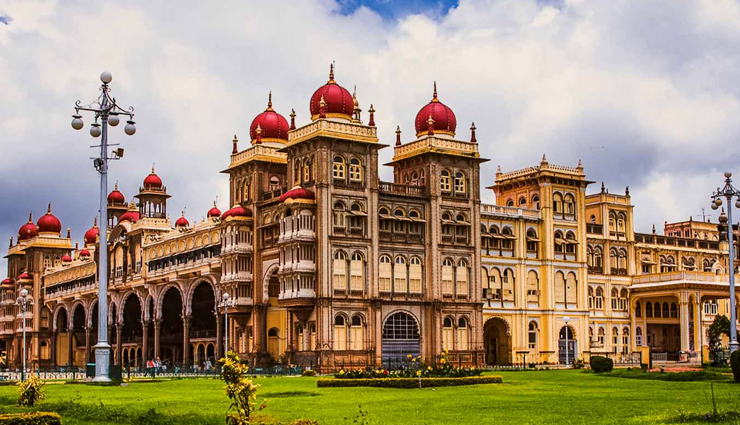
# The Mysore Palace, Karnataka
The Mysore Palace, also known as the Amba Vilas Palace, is a magnificent and iconic royal palace located in the city of Mysore. It is one of the most visited tourist attractions in the country, renowned for its grandeur, architectural beauty, and historical significance. The Mysore Palace was originally built in the 14th century but underwent several reconstructions over the years. The current structure, completed in 1912, represents a harmonious blend of Indo-Saracenic, Rajput, Hindu, and Gothic architectural styles. The three-storied palace is constructed primarily with gray granite and features intricate carvings, beautiful domes, arches, and ornate ceilings. The palace's facade is adorned with stunning stained glass windows, creating a mesmerizing effect when illuminated.
Royal Residence:
The Mysore Palace served as the official residence of the Wodeyar dynasty, the ruling Maharajas of Mysore. It was their abode and the seat of their power for centuries. The palace is still inhabited by the royal family, although a significant portion has been converted into a museum and is open to the public.
Grand Durbar Hall:
One of the highlights of the Mysore Palace is the grand Durbar Hall, also known as the Public Hall. This opulent hall was used for official ceremonies and royal functions. It features an ornate ceiling with intricate patterns, elegant chandeliers, and intricately carved pillars. The hall's grandeur reflects the regal splendor of the past.
Museum and Art Gallery:
A part of the palace has been transformed into a museum showcasing a rich collection of artifacts, costumes, weapons, paintings, and other royal memorabilia. The museum offers insights into the history, culture, and traditions of the Wodeyar dynasty. The palace also houses an art gallery that exhibits a vast collection of beautiful paintings from various schools of art, including traditional Mysore and Tanjore paintings.
Illumination and Festivities:
The Mysore Palace is renowned for its spectacular illumination during special occasions and festivals. Thousands of light bulbs illuminate the palace in the evenings, creating a breathtaking sight. The palace is especially dazzling during the ten-day-long Mysore Dasara festival, when it is adorned with countless lights, and cultural performances and processions take place within its premises.
Cultural Significance:
The Mysore Palace holds immense cultural significance for the people of Karnataka. It represents the rich heritage and architectural prowess of the region. The palace is a symbol of the legacy of the Wodeyar dynasty and their contributions to the development of Mysore as a cultural and artistic hub.
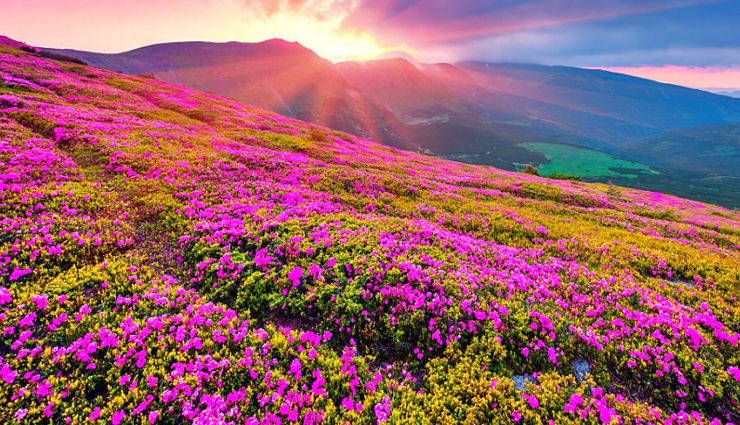
# The Valley of Flowers, Uttarakhand
The Valley of Flowers is a breathtakingly beautiful national park located in the Chamoli district of Uttarakhand. This UNESCO World Heritage Site is renowned for its vibrant meadows, diverse alpine flowers, and pristine natural beauty. The Valley of Flowers is nestled in the western Himalayas and is part of the Nanda Devi Biosphere Reserve. It is situated at an altitude ranging from 3,250 meters to 6,750 meters above sea level. The valley is surrounded by snow-capped peaks, including Nanda Devi, which is the second-highest mountain in India.
Floral Paradise:
The Valley of Flowers is celebrated for its vast array of alpine flowers that bloom during the summer months. The valley transforms into a vibrant carpet of colors as numerous species of flowers, including orchids, poppies, primulas, marigolds, daisies, and rhododendrons, paint the landscape with their brilliant hues. It is a haven for botany enthusiasts, nature lovers, and photographers.
Fauna and Wildlife:
Apart from its stunning flora, the Valley of Flowers is also home to a rich variety of fauna. The region is inhabited by rare and endangered species such as the snow leopard, musk deer, Himalayan black bear, red fox, and a wide range of avian species. The valley provides a sanctuary for these animals in its undisturbed and pristine ecosystem.
Trekking Destination:
The Valley of Flowers attracts trekkers from around the world who embark on a challenging yet rewarding journey to explore its natural wonders. The trek to the valley involves traversing through picturesque landscapes, crossing rivers, and ascending steep slopes. The trek route offers breathtaking views of the surrounding mountains and glaciers, making it a memorable adventure for outdoor enthusiasts.
Monsoon Magic:
The best time to visit the Valley of Flowers is during the monsoon season, from July to September, when the flowers are in full bloom. The region receives abundant rainfall during this time, which nurtures the flora and creates a lush and verdant landscape. The monsoon clouds and mist add an ethereal charm to the valley, enhancing its enchanting appeal.
Conservation and Preservation:
The Valley of Flowers has been protected and conserved to maintain its ecological balance and preserve its unique biodiversity. The area was declared a national park in 1982 and later designated as a UNESCO World Heritage Site. Visitors are required to obtain permits to enter the park, and camping is only permitted in designated areas to minimize human impact on the fragile ecosystem.
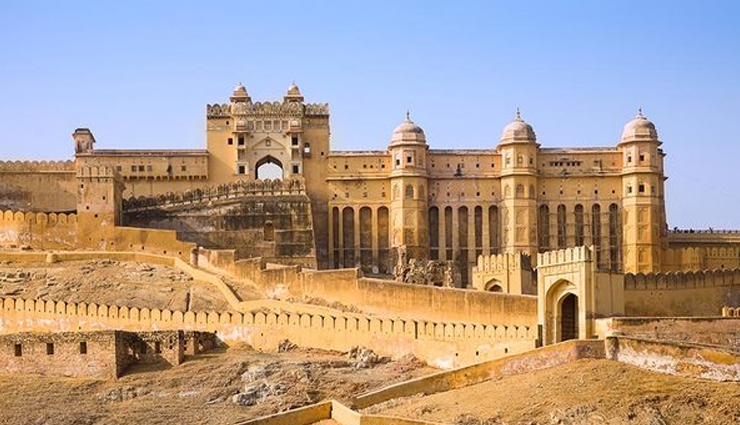
# The Amer Fort, Jaipur
The Amer Fort, also known as the Amber Fort, is a majestic and historic fortress located in Amer, Jaipur.This architectural marvel is renowned for its intricate design, grandeur, and historical significance. The Amer Fort dates back to the 16th century and was originally built by Raja Man Singh I, a trusted general of Emperor Akbar. Over the years, subsequent rulers made additions and modifications, resulting in a blend of Rajput and Mughal architectural styles. The fort is constructed with red sandstone and white marble and showcases a unique fusion of Hindu and Islamic architectural elements.
Fort Complex:
The Amer Fort is a vast complex consisting of multiple sections, each with its own distinct features. These sections include the main palace, courtyards, gardens, temples, and defensive structures. The fort is situated on a hilltop, offering panoramic views of the surrounding landscape.
Sheesh Mahal (Mirror Palace):
One of the highlights of the Amer Fort is the Sheesh Mahal, also known as the Mirror Palace. This enchanting hall is adorned with intricate mirror work, embedded with thousands of tiny mirrors. When candlelight or natural light illuminates the hall, it creates a mesmerizing effect as the mirrors reflect and amplify the light. The Sheesh Mahal is a testament to the exquisite craftsmanship and attention to detail of the artisans of that era.
Diwan-e-Aam and Diwan-e-Khas:
The Amer Fort features two grand halls: the Diwan-e-Aam (Hall of Public Audience) and the Diwan-e-Khas (Hall of Private Audience). The Diwan-e-Aam was where the king addressed the public and held court sessions. It has beautifully carved columns and galleries. The Diwan-e-Khas, on the other hand, was the private audience hall where the king met with his ministers and important guests. The hall is adorned with intricate floral designs and delicate paintings.
Ganesh Pol and Sila Devi Temple:
The Ganesh Pol is a splendid gateway in the Amer Fort that leads to the private palaces of the royal family. It is adorned with beautiful frescoes and intricate carvings. Adjacent to the Ganesh Pol is the Sila Devi Temple, dedicated to the goddess Kali. The temple is known for its silver doors and the religious fervor it attracts during festivals.
Sound and Light Show:
In the evenings, the Amer Fort comes alive with a captivating sound and light show that narrates the history and legends associated with the fort. The show takes visitors on a journey through time, combining audio storytelling, colorful lighting, and projection mapping to create a mesmerizing experience.
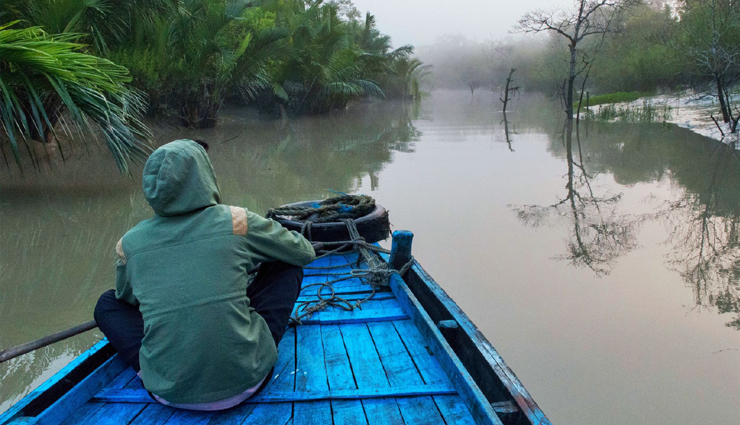
# The Sundarbans National Park, West Bengal
The Sundarbans National Park is a UNESCO World Heritage Site and a renowned national park located in the state of West Bengal. It is a vast and biodiverse mangrove forest that stretches across the delta of the Ganges, Brahmaputra, and Meghna rivers. The Sundarbans is the largest mangrove forest in the world and is known for its unique ecosystem. It is home to a complex network of tidal waterways, mudflats, and small islands formed by the intricate root system of the mangrove trees. The mangroves not only provide a habitat for numerous species but also act as a natural buffer against coastal erosion and storms.
Flora and Fauna:
The Sundarbans National Park is renowned for its rich biodiversity. The park is home to a wide range of plant species, including various mangrove species such as the Sundari tree, after which the region is named. It is also a habitat for several animal species, including the Bengal tiger, estuarine crocodile, Indian python, spotted deer, and numerous bird species. The Royal Bengal Tiger is the most iconic resident of the Sundarbans and is a major attraction for wildlife enthusiasts.
Unique Adaptations:
The Sundarbans ecosystem is characterized by the unique adaptations of its inhabitants to the mangrove environment. The Sundari trees have stilt-like roots that help them survive in the saline and waterlogged conditions. Animals, such as the Bengal tiger, have adapted to swimming in the brackish waters and have developed a taste for fish. The Sundarbans is also known for its diverse marine life, including various species of fish, crabs, and mollusks.
Boat Safari and Wildlife Viewing:
Exploring the Sundarbans National Park involves taking a boat safari through its intricate waterways. These safaris offer visitors the opportunity to witness the unique flora and fauna of the mangrove forest. Spotting a Bengal tiger in its natural habitat is a thrilling experience, although sightings are relatively rare due to the tiger's elusive nature. The boat safaris also provide opportunities to observe other wildlife, such as crocodiles, deer, and numerous bird species.
Conservation and Preservation
The Sundarbans National Park is a protected area, and efforts are made to conserve and preserve its delicate ecosystem. The park is managed by the Forest Department of the Government of West Bengal. Measures have been implemented to protect the mangrove forests, monitor wildlife populations, and promote sustainable tourism practices.
Cultural Significance
The Sundarbans region is not only ecologically important but also holds cultural significance. The local communities, known as the "Mawlas" or "Boat People," have lived in and around the Sundarbans for generations. They have developed a unique way of life, closely intertwined with the mangrove ecosystem. The Mawlas are skilled fishermen and have deep-rooted knowledge of the forest and its wildlife.
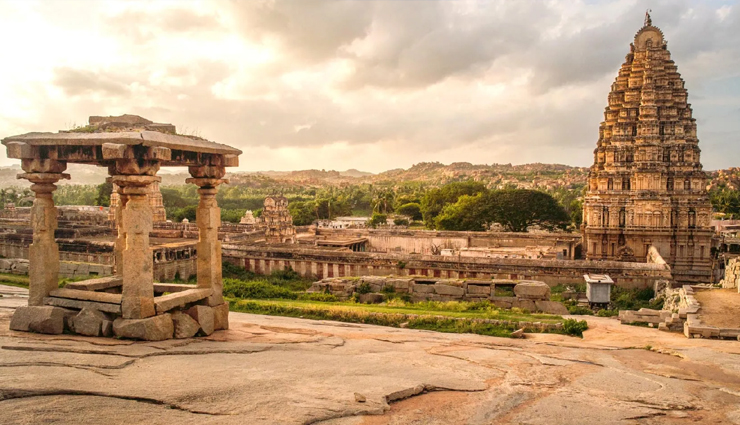
# The Hampi Ruins, Karnataka
The Hampi Ruins, located in the state of Karnataka, India, are an ancient and sprawling UNESCO World Heritage Site. Hampi was once the capital of the Vijayanagara Empire, one of the most powerful and prosperous empires in South India during the 14th to 16th centuries. The Hampi Ruins are a testament to the grandeur and architectural brilliance of the Vijayanagara Empire. At its peak, Hampi was a thriving city with magnificent palaces, temples, marketplaces, and other structures. The ruins stand as a reminder of the city's glorious past and its significance as a cultural, religious, and economic center.
Architectural Marvels:
The ruins of Hampi showcase a unique blend of Hindu and Islamic architectural styles. The city's temples, palaces, and other structures feature intricate carvings, exquisite stone pillars, ornate facades, and elaborate mandapas (pillared halls). The iconic stone chariot at the Vittala Temple is one of the most recognizable symbols of Hampi.
Virupaksha Temple:
The Virupaksha Temple is one of the oldest and most significant temples in Hampi. Dedicated to Lord Shiva, it is an active place of worship and attracts devotees from all over. The temple complex features towering gopurams (gateways), pillared halls, and a beautiful courtyard. The annual Hampi Utsav, a cultural festival, is celebrated here with great fervor.
Vijaya Vittala Temple:
The Vijaya Vittala Temple is a masterpiece of Vijayanagara architecture. It is known for its iconic stone chariot, which is a representation of the mythical chariot of Lord Vishnu. The temple complex also houses the famous musical pillars that produce different musical notes when struck.
Hazara Rama Temple:
The Hazara Rama Temple is a small but intricately carved temple dedicated to Lord Rama. The walls of the temple depict scenes from the Hindu epic, Ramayana. It served as the private place of worship for the Vijayanagara kings.
Royal Enclosures and Lotus Mahal:
The Royal Enclosures were the residential and administrative areas of the Vijayanagara rulers. The area includes the Queen's Bath, a massive stepped tank that provided a private bathing area for the royal family. The Lotus Mahal, a unique pavilion with Islamic architectural influences, served as a summer palace for the queens.
Monolithic Statues and Hampi Bazaar:
Hampi is also famous for its monolithic statues, including the massive monolith of Lord Ganesha known as the Sasivekalu Ganesha and the Kadalekalu Ganesha. These statues showcase the exceptional sculptural skills of the artisans of that era. The Hampi Bazaar, a street lined with old market structures, offers a glimpse into the bustling trade and commerce that once thrived in the city.
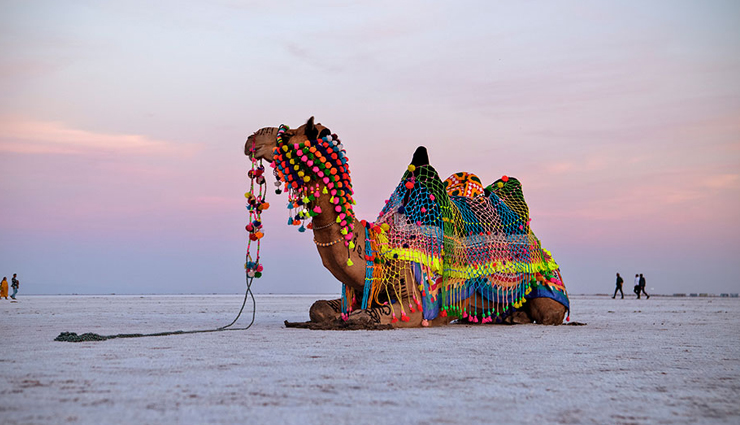
# The Great Rann of Kutch, Gujarat
The Great Rann of Kutch is a mesmerizing salt marsh located in the Thar Desert of Gujarat, India. It is one of the largest salt deserts in the world and a unique natural phenomenon. The Great Rann of Kutch spans across an area of approximately 7,500 square kilometers in the western part of Gujarat. It is characterized by vast stretches of white salt flats that glisten under the sun, creating a stunning and surreal landscape. During the monsoon season, the marshland gets submerged in water, transforming into a shallow saltwater lake.
Salt Crust and Salt Pans:
The salt crust in the Great Rann of Kutch is formed due to the evaporation of seawater that enters the marsh during high tides. As the water evaporates, it leaves behind a layer of crystallized salt. The marshland is dotted with shallow depressions called salt pans, where the salt is extracted by local communities. The salt pans create a mosaic-like pattern across the Rann, adding to its visual appeal.
Wildlife and Biodiversity:
Although a barren landscape, the Great Rann of Kutch is home to a variety of wildlife species that have adapted to the harsh desert environment. It is a haven for migratory birds, including flamingos, pelicans, cranes, and storks, which flock to the Rann during the winter months. The area also supports the endangered Indian wild ass, known as the "Ghudkar," which is found in the nearby Little Rann of Kutch.
Rann Utsav:
The Great Rann of Kutch is famous for the Rann Utsav, a vibrant festival celebrated during the winter months. This cultural extravaganza showcases the rich traditions, folk music, dance performances, handicrafts, and cuisine of the region. Tourists from around the world visit the Rann during this time to experience the vibrant atmosphere and witness the stunning beauty of the desert under the moonlight.
Cultural Heritage:
The Great Rann of Kutch is also known for its rich cultural heritage. The region is home to various indigenous communities, including the Kutchi people, who have a distinct culture and craftsmanship. The local communities engage in traditional art forms such as embroidery, mirror work, and weaving, which are renowned for their intricate designs and vibrant colors.
White Desert and Sunset Views:
The vast expanse of the salt desert creates a surreal and ethereal atmosphere, especially during sunrise and sunset. The white salt flats stretch as far as the eye can see, blending with the horizon, and the changing hues of the sky create a breathtaking visual spectacle. The Great Rann of Kutch is a photographer's delight, offering unique opportunities to capture stunning landscapes and silhouettes against the backdrop of the desert.





